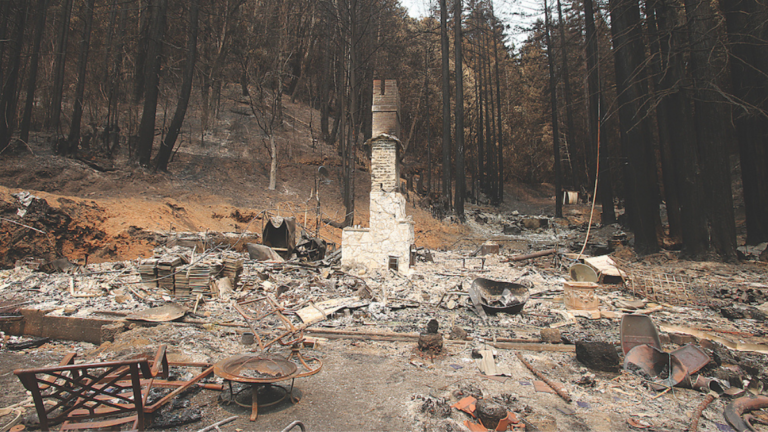The music rises, and the worn, bare wooden floor is suddenly barraged with dancers in leotards, tights and leg warmers. Their skirts twirl and lift as they spin and leap across the studio, their reflections bright and ephemeral in the mirror. With a quick count and a nod, the choreographer dismisses them from their space, and they seemingly float off the floor, only to be replaced by another set of equally strong dancers.
Melanie Useldinger is in her element. Her head bobs up and down and her toes tap as she keeps time with her troupe. As the owner of Agape Dance Academy, Useldinger has watched many of these dancers grow up right before her eyes. The past year, however, has been challenging for her and her team, and it’s with a renewed sense of optimism that she looks toward the future.
During any given year, Useldinger would find 100-200 dancers beneath her wings, but this year, Useldinger has just 50. Between the fires of last fall and the Covid outbreak, new kids weren’t showing up, and that made things tough for Useldinger, who has been leading students en barre for more than 30 years.
“Our older, more dedicated dancers didn’t skip a beat, and they stayed really strong. It was the little ones that were pulled away when families were displaced or parents got sick,” she said. “It takes about eight years to train a dancer, so it’s an investment for all of us.”
Meredith Useldinger grew up in dance under her mom, Melanie’s tutelage, and she now boasts of being the instructor for the Agape Petite Ballet troupe (ages 3-7). In the upcoming production of “A Midsummer Night’s Dream Ballet,” the younger Useldinger is enthralled by the little ones.
“The petite ballet dancers do their own performance on Friday night only,” says Meredith, “and they’re so cute that they’ll break your brain. They’re the greatest shows, because those little ones just can’t do anything wrong. One year, during a performance, this petite dancer had a feather from her skirt float up into the air. The whole class did their dance, and she spent the entire time trying to get the feather out of the sky. The audience couldn’t breathe, they were laughing so hard, and it was just so sweet. I’m excited to have that energy back.”
Meredith is grinning at her charges as she evaluates what makes their program a success.
“I think it’s the community. The process of putting together a show is a lot like a pregnancy,” she said. “It takes months to get through casting and choreography and costumes and rehearsals, but once you get to that show, and once those dancers are on stage, you get that rush of endorphins, and that ‘baby’ is just triumphant. We have this history of students that we’ve loved and families that we’ve impacted—and that have impacted us—and that makes it extraordinary.”
Meredith and her four siblings all grew up dancing, and they’ve created a legacy around their mom’s work and her brand.
“We’re all still very close,” said Meredith, “and we know this is home. My kids have grown up on the floor too, and they dance in the Nutcracker each year.”
Rather than taking place on a stage in a theater, this weekend’s performances will be held in the Green Hills Redwood Grove in Scotts Valley. Instead of a blank slate of a stage, the dancers will be surrounded by nature, and tucked amongst the forest, creating a perfect setting for this ethereal performance based on the work of William Shakespeare. Tonight’s show is sold out, but as of Wednesday there were still tickets for the June 12 show.
Useldinger is ready to ordain this performance as a fresh start for 2021. Due to Covid, she had to close several of her smaller locations, leaving her with just two operating studios (Aptos and Scotts Valley), but she’s grateful for all the remains.
“The kids and their families are our hearts,” Useldinger said, “and we lost a lot of our main staff along the way. It’s been a challenge, and although we received a (Paycheck Protection Program) loan from the Small Business Administration, we still had to downsize. That funding kept us afloat until we could resume our classes in person. We tried to teach our students via Zoom, but after being in front of a computer all day for school, it was just too tough for most of them.”
It will be tough, too, for those dancers to perform in masks.
“The mask requirement is still in place, so our dancers will be in decorated masks that become part of the costume,” Useldinger said. “We have a whole team that just does masks for our performances, and we’re ready for anything.”
That includes completing this set of performances before launching into summer intensive camps for her dancers. That period culminates in a performance of “A Swan Lake Summer,” which will also be held outdoors.
Reflecting on the past 15 months, Useldinger said, “I see triumphant things come out of our hardest things. This has been so hard on all of the kids, but our company dancers are so dedicated, and have such sweet spirits, that I feel like this will be one of the best performances ever. The camaraderie, the sweetness, and the gratitude of finally being together again will be felt and celebrated by us all.”
Tickets for this weekend’s performances can be purchased at agapedance.com.


























